


November 1, 2020
DAVID FRANCIS URROWS
–––––––––––––––––––––––––––
The Organ in China
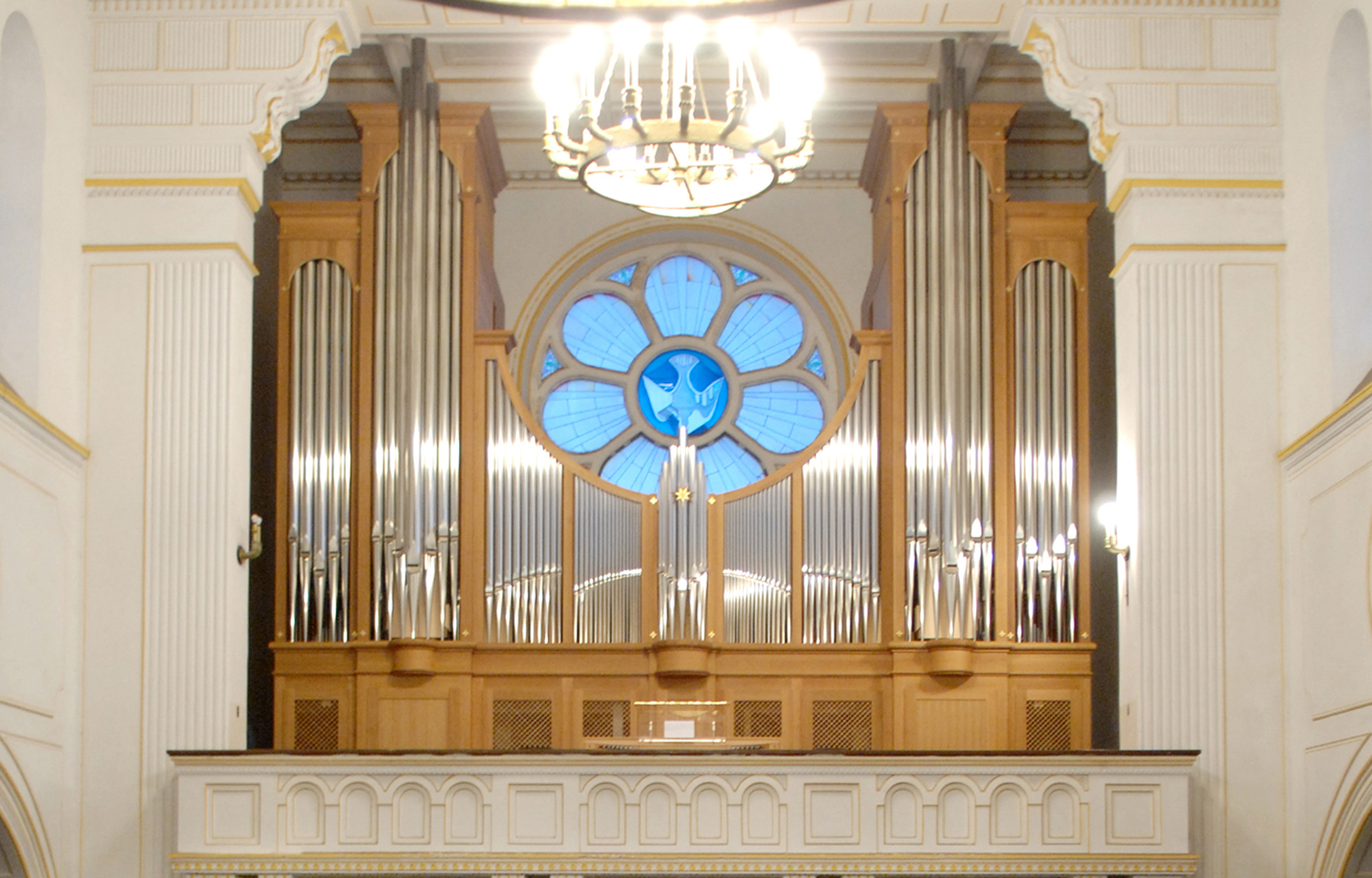
November 1, 2020
DAVID FRANCIS URROWS
–––––––––––––––––––––––––––
The Organ in China

The 2010 Jaeger and Brommer organ at St. Michael’s Cathedral in Qingdao, Shandong, China.
The 2010 Jaeger and Brommer organ at St. Michael’s Cathedral in Qingdao, Shandong, China.
Introduction
David Francis Urrows, author of the groundbreaking book Keys to the Kingdom: A History of the Pipe Organ in China (available here), and the founder of the Pipe Organ in China Project, a registry of all the surviving pipe organs in China, discusses his decades-long research into the organ in China with Vox Humana Associate Editor Guy Whatley.
––––––––––––––––––––––––
David, thank you so much for agreeing to this interview. Could you tell us a little about your background and how you became interested in organ and choral music?
I was born in Hawai’i and grew up in New York City, except for a year when my family lived in London. I was interested in music from an early age. My first school was a strict, Episcopalian boys school with an excellent music master and organist. In second grade I auditioned and was accepted into the school choir. We sang every morning for chapel, and sometimes at the Cathedral of St. John the Divine for major feasts when additional trebles were needed. I was very drawn to the organ, and when I was a little older the organist let me draw the occasional stop. I studied piano until I was about 12, and then switched to organ. I also sang in the choir of the church where my organ teacher worked, and at my parent’s church as well, so there was a period when I sang in three different choirs. It was fun for me, and a recurring holiday nightmare for my mother, getting me around to all these places with the correct music and the correct vestments. I then began to compose when I was in high school, and majored in music in college, first in musicology, and later in composition. I had an undergraduate minor in archeology, which may explain a lot about my interest in historical source research.
Looking at your expansive list of publications, I'm struck by the diversity of interests and expertise that you have. How did that come about?
I think it’s the result of the mise en abyme of research. Research is a corridor lined with doors. You push one open and you find another corridor, also lined with doors. You open one of those doors, and you find yet another corridor, etc. I think my organ research doesn’t need an explanation, it came about naturally and the China focus resulted from my move to Hong Kong in 1989. My earlier work in choral music history and criticism grew directly out of my studies with Randall Thompson and my writings about him. The critical edition I published between 2002 and 2018 of the music of Otto Dresel was the result of being given all of his surviving manuscripts in 1982 by his granddaughter, with the request to "do something" with them.
So these things happened accidentally, or at least in an unplanned way. A colleague asks a question I cannot answer, and so I try to find an answer. An elderly lady gives me a decrepit box hauled out of her cellar, and instead of the usual rubbish it turns out to be a gold mine of unpublished nineteenth century music. It was my work on the first volume of the Dresel critical edition — 90 Lieder and other vocal pieces — that introduced me to word and music studies, and intermediality studies generally. This in turn led to a small cluster of grad students under my supervision at Hong Kong Baptist University, all working on doctoral theses in music and intermediality topics for about 10 years. All that’s gone now, of course. I have to admit, following things I found compelling distracted me for many years from my work in composition. But that’s another story.
How did you became a music professor at Hong Kong Baptist University?
After finishing my doctorate, I taught for three years at the University of Massachusetts at Lowell. My job there was a non-tenure track position, and they would have given me the boot after five years. In my third year I started looking for something else and took it into my head that I’d like to teach overseas. I applied for jobs in Cairo and Hong Kong, and I wound up with the Hong Kong job. I had never been to Asia, spoke almost no Mandarin Chinese, certainly no Cantonese, and I really didn’t know what I was getting into. It was a difficult adjustment for a number of reasons. I left after a few years, went back in 1997, left for a year to teach in Cyprus in 2000, and then in 2001 I was back in Hong Kong. At that point stability was everything, and I stayed until I was ‘retired’ in 2018 at the so-called ‘mandatory retirement age’ of 60.
What is the organ scene like in Hong Kong?
It’s under-developed and under development. When I arrived in 1989, most trained organists in Hong Kong (I’m not talking about pianists forced onto the console by their churches) were and had historically been expats. Almost all these people had a day job. I had been there for about two months when I was asked to play for the American Thanksgiving Day service at St. John’s Cathedral. It was quite something playing The Star-Spangled Banner in an Anglican church, accompanying a US Navy choir. Some of the organists I knew back then were nevertheless fine players, even organ scholars at British universities.
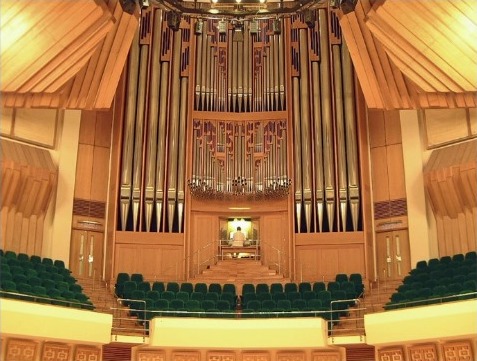
In the mid-1990s Hong Kong-born organists who had been training in the UK and other places started to return, and the situation now is that there are more professionally-trained local organists than there are pipe organs for them to play on. The biggest churches, the Anglican and Roman Catholic cathedrals for example, have been making do with electronic instruments for half a century or more, which tells you there’s a long way to go. The last major installation was the IV/93 Rieger in the Cultural Centre in 1989, over 30 years ago. There are a few medium-sized pipe organs in wealthy churches, but these and smaller instruments are difficult to access for practice.

There is also a depressing lack of variety. Hong Kong is stuck in the mid-twentieth century conventional, two-manual neo-baroque tracker mindset (you can guess with 90% accuracy the stop list of every single one of these organs). There is nothing in Hong Kong except the big Rieger on which to play much of anything written after 1770. At one point it looked like we might be able to buy a two-manual organ for HKBU, and I pushed hard for a French-style instrument modelled tonally on Cavaillé-Coll. There was resistance to the idea, but one builder sent us a nice proposal. We finally gave up because the university wouldn’t allow us to use the space involved for that purpose. One development aiming to help with this and similar problems is the Hong Kong Chapter of the AGO, formed in 2014. This is an important step.
Can you tell us anything about music and organ education in Hong Kong and in mainland China?
In Hong Kong, up until the turn of the millennium virtually all organ instruction was one-on-one private teaching. Organists generally came to it through their churches and studied with the organist who happened to be there. Then they might go on to one of the foreign-trained organists teaching in the Territory, often in preparation for ABRSM exams, and perhaps then to study overseas. The Hong Kong Academy for Performing Arts, founded in 1984, installed a IV/41 Rieger organ in 1986. That should have been the catalyst for starting an organ program, but there was little enthusiasm for this among the keyboard faculty, and the moment passed and was not seized. At HKBU, and also at the Chinese University of Hong Kong, there is an occasional organ major, and I taught organ as second instrument study. Around 2000, the first wave of returning overseas organ majors started to have an impact, and there is now a second generation of young organists in Hong Kong, locally trained to a fairly high level. The Hong Kong AGO Chapter is reaching out to work with secondary school students; and the larger churches, such as St. John’s, and church organizations are doing more in the way of running structured programs for organ study connected with their own denominational schools. A few generous benefactors have been responsible for the installation of several practice pipe organs in the past decade. So, developments show a positive trend here.
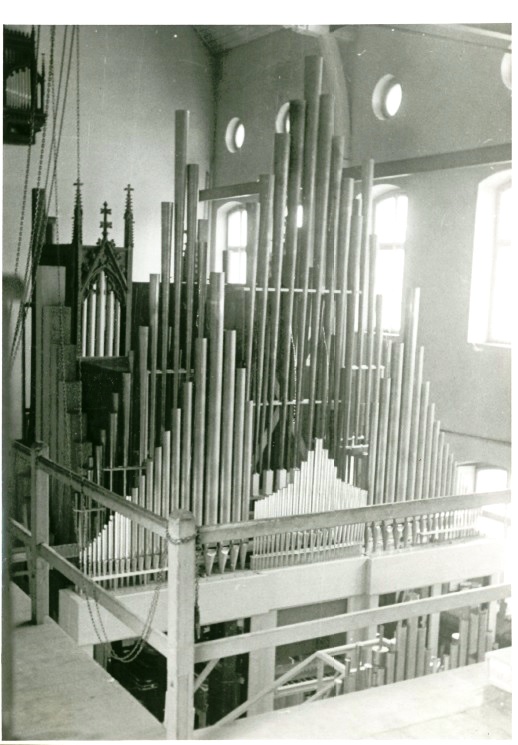
On the Mainland the situation is different. Prior to 1949, organ study was exactly what I described above: it was private, and generally occurred in a denominational context. Missionary-run schools sometimes had staff to teach organ (usually on a harmonium), but it was entirely for the propagation of the musical culture of the mission. A few of the larger schools and colleges, such as Fu Jen in Beijing, briefly had more serious programs for organ study, swept away by World War Two, the Sino-Japanese War, and the Chinese Civil War.

After 1949, virtually all the pipe organs in China were destroyed, many during the Cultural Revolution. And for 40 years no pipe organs were installed on the Mainland. The first pipe organ installed after the Communist victory in 1949 was the 1989 III/60 Rieger-Kloss in the Beijing Concert Hall. To the end of the 1990s, four additional organs were installed, in Beijing and Guangzhou. But no one knew how to play them, and so they were for the most part played by people like myself, brought in for this or that event. On 9 September 1999 (9.9.99, 9 is the "lucky" number in Mandarin) I played on the IV/80 Rieger-Kloss at the Xinghai Concert Hall in Guangzhou for a mass wedding of 99 couples, televised by CCTV. This kind of event was a common experience for the few organists circulating at the time. Every time I have played an organ on the Mainland the question I am invariably asked is, "When are you coming back to teach us?" It’s kind of heartbreaking.
In the 1990s and 2000s a handful of visiting organists did some teaching, but that was a drop in the bucket in a country of 1.3 billion people. But these were also the years, up to about 2018, of the "organ race" in China, with municipal governments vying with each other to install larger and larger instruments in their new civic concert halls. Some hybrid organs were also installed in major Chinese conservatories in the first decade of the twenty-first century, and small-scale organ study began. Finally, in 2015 the Shanghai Conservatory took the lead, invited John Walker for a week, and got serious about the organ. There is an American Guild of Organists chapter there now. This approach has been imitated by other big music institutions, and I understand anecdotally that many organ programs in the USA are now full of Mainland Chinese majors. The principal difficulty, as I see it, is that it is by default a completely secularized approach to study, performance, and indigenization of the pipe organ and its repertoire. Divorced from its iconic role in Christian worship, it’s hard to conceive how this will work in the long run.
How did your interest in the history of the organ in China come about?
I had been in my job in Hong Kong for about two weeks when there was a knock on the door of my office. A colleague came in, introduced himself as a professor of religion, and asked if I had ever heard of a pipe organ in Shanghai with bamboo pipes. I told him I didn’t know of such an instrument, but that I would look into it. That’s how it started, and I’m still looking into it.
Could you tell us about some of the earliest organs in China’s history?
The earliest pipe organs in China were two positives built in Macau in 1600/01, one for the Jesuit missionary Matteo Ricci. It was intended as a gift for the Wanli emperor, but never made it to Beijing and was eventually used by the Catholic mission in Nanjing.
A regal was sent to Wanli in 1598, but that’s a type of reed organ. And this is where I’d like to add that the sheng, the Chinese mouth-organ, and all its myriad forms found throughout the Asia-Pacific region, are not pipe organs, and have nothing to do with the Western pipe organ. They were unknown in Europe until the mid-seventeenth century, and lack all three of the crucial elements of a pipe organ: flue pipes, an artificial wind supply, and a mechanism for opening and closing the pipes at a distance from the performer.
Some other writers have taken the line that "they simply must have had pipe organs" in such and such a place in China at a date prior to 1600, but I have not seen any evidence of such organs, and dismiss these claims as optative history and, at worst, fantasy. The next report of an organ is one used at Ricci’s funeral in Beijing in 1611.
Do we know anything about how these organs were used, and who might have played what music on them?
We know next to nothing about repertoire because it was not deemed important for posterity. It was just the Introit, the Psalm, the ‘spooky piece’ at the Elevation, the ‘flashy piece’ after the Ite missa est… Initially they were played by missionaries, and in seventeenth century Macau, local converts and catechists were trained as organists. We can hypothesize that, given the strong Portuguese presence in the early China mission, Iberian keyboard music may have been the dominating style. In a 2011 concert in Macau marking the 400th anniversary of Ricci’s funeral, I played works by Tomás de Santa Maria, Manuel Coelho, Antonio and Hernando de Cabezón, and Luis de Narváez. I have no idea if any of these composers were played at Ricci’s funeral; but at least I got into the sound world of his time. I think that is as far as we can go right now.
Organs built by or bought for the missions were of course used liturgically and perhaps for recreation. Fancy organs with ornate decoration were gifts, and gave status and "face" to their recipients. Once Tomás Pereira began building organs in China in the 1670s, they were able to be used more normally for performances in the imperial court.
I’m struck that no intact organs survive in China from before the middle of the twentieth century. But there are some fragments of some fascinating instruments from nineteenth-century Shanghai. Could you tell us something about these?
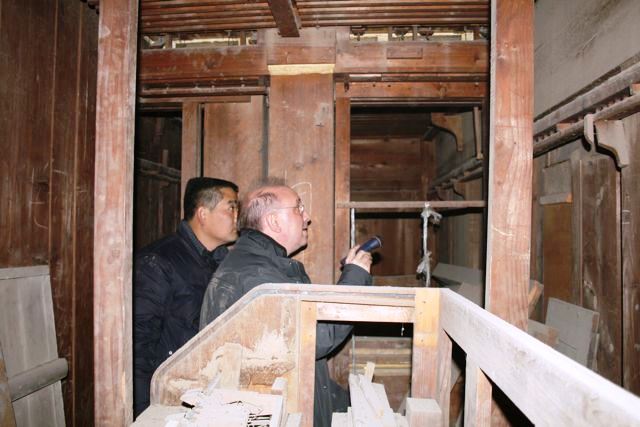
In all my years of wandering I have found the wrecks of only three pre-1949 pipe organs, one in Beijing, one in Shanghai, and one in an out-of-the-way place in Hebei province called Daming. They survived due to inertia in the Beijing case (the 1920 Kimball at Peking Union Medical College), and the other two due to the fact that, having partly survived the Cultural Revolution, neither church wanted to throw them out and lose that evocative piece of furniture. I know of other organs that survived in demolished states into the 1980s and were then chucked out, the congregations having no hope of finding the money or the personnel to repair them.

A positive organ with three ranks of bamboo pipes, made in Shanghai in 1858 by the same people who made the "Bamboo Organ of Tungkadoo," the instrument that began my research into this area, is in storage in a museum in Paris. It is somewhat ironic that this organ, built as a gift for Napoleon III, is the only one even remotely in its original condition.
There is so much new material in your book. How did you go about researching this topic, and did you have to develop new skills?
There was nothing like this study when I started, and there isn’t much like it even today. At the start my only goal was a census, a list basically, of all the organs I could find that had been built in or sent to China up to 1949. I was able to visit churches in the major Chinese cities, but remote places were difficult to get to then. Even walking through some old neighborhoods in Shanghai in 1990 was deemed suspicious. People brought toddlers out of their dilapidated houses to see the spectacle of a waiguo ren (foreigner) walking down the street. At that time I didn’t include Hong Kong or Macau in my study, and I summarized my initial findings in a three-part article in The American Organist in 1993. For about five years that’s where things stood. When I returned to Hong Kong in 1997, I realized I had to include Hong Kong and Macau, and began to hear about new organs being built on the Mainland. This gave the Project new fields of inquiry.
There wasn’t much to review then, just a few books, notably Kraus's 1989 Piano and Politics in China, and a little later Tao Yabing’s anthology of writings on Western music in China. But Kraus was too Leftist for me, and Tao’s book seemed problematic in its documentation and understanding of foreign languages. I knew scholars who were looking at the inculturation of Western music in China. I emailed them, talked to them at conferences, and got both helpful and unhelpful information. They pointed me to useful sources, and also sent me chasing down red herrings. I began tracking down data in histories of Treaty Port-era China, and of religious missions. All this led to my becoming an ad hoc sinologist and missiological historian.
Working in Asia-studies libraries around the world was the next step. I looked at anything that might discuss churches, and so liturgy, and perhaps music. Architectural histories were also valuable, as were memoirs of travel, and even old travel guides. Organbuilders who were still in business, and who had worked in China before 1949, sometimes had archival material. After 2000, when my work started to be noticed by sinologists, I began to get access to arcane European archives, and research libraries and institutes in Mainland China (though not all of them: I have been bluntly told that I cannot see lots of stuff, with no reason given). I also finally got to those off-beat places where I knew organs had once been installed. When the organ race really took off at the end of the 2000s, I started to receive invitations from builders to attend dedications of new instruments and was asked to be an advisor on various projects.
What was is like doing field work in China? How important is it to go and physically examine and be in the places that are relevant to this history?
Even today, when things are much more developed than they were in 1989, it’s never a holiday. However, I feel site visits are essential. Without knowing what I might find, I never come away without having learned something important from visiting a place or an organ installation. Then there’s what I call the resonance of things: the idea that aspects of objects and their meaning persist, and even change and grow with time despite the fact that they may no longer be physically there. A building is also an artifact, if you will. By this I mean artifact in the sense that paleontologist Loren Eiseley meant it when he defined artifact as "the humanly touched thing." These things carry a resonance of the person who has touched them and made them what they are. Looking at places where organs once were, for example the loft at Dongjiadu in Shanghai, site of the famous bamboo organ until it was destroyed by Red Guards in 1966, I learned something about the space, the acoustics, the view down the nave, what it was like to be present there. I felt I had a much better idea of what the organ must have been like than if I had not sneaked up the staircase, ignoring the ‘Do Not Enter’ sign.
Your research has created something of a methodology that might be used for documenting organs and history in other parts of the world. Could you please share your thoughts on that?
My scholarly motto is "Putting music back into musicology." In the Project this means keeping the pipe organ as the focus of my work. It’s an organological study, the history of a musical instrument. When I began the book manuscript in 2013, I came to sense that it was not only a narrative account, but that it was also taking on aspects of a metastudy. That is, it is not only my "story," but can be read as a framework for putting history of this kind together from a large number of microhistorical sources. This is all the more interesting given the dimensions of chronological time and physical space that the book covers. I hope it will be useful as a model. But each place has its own idiosyncrasies; the approaches that worked for me may not work for everyone, and the research tactics I sometimes had to invent and use will seem absurd.
You also manage a website called "The Pipe Organ in China Project," which documents every organ in China. Can you tell us about this project?
The website was planned for years but was delayed until my book Keys to the Kingdom was published in 2017. It’s an enhanced version of my Census, and a way to see the big picture of the Project’s finding. It’s open-source within limits, and updated every month to include new installations and information. I’m surprised and pleased how many have visited since it was launched in 2018.
What do you think the future of the organ will look like in China?
I await with interest what comes of all the organ study now underway overseas by Mainland students. What will they do? Will they come back? This seems to me to be the only way forward for the development of an organ culture in China comparable to those in Japan, South Korea, and Taiwan, to mention the three Asia Pacific Network of Science and Technology Centres areas with the strongest culture, largest number of pipe organs, and activity in the field. The stumbling blocks in China are the almost-entirely civic nature of this, with over 90% of the pipe organs under some form of government management, and the increasing restrictions on religious freedom. How will you make a living or a career as an organist in a country with no current organ tradition or culture if you are not playing for a church? I have even seen cases of organ recital repertoire being subject to censorship in the past five years.
Can you tell us what you are working on now and what your future plans are?
Currently I am a Research Fellow of the Instituto Ricci de Macau, and I am writing a book about François Ravary, the Jesuit mastermind of the Shanghai bamboo organs. It will include transcriptions and translations of the unpublished letters he wrote about this project, and much more. Ravary established the first brass band in China in 1858, the first school orchestra a year or so later, and helped with the formation of the first public chamber orchestra in the 1860s. The working title is Jesuita cantat. I’m also finally going back to music composition, revising old works, writing new works, and generally trying to make this a more visible part of my professional life.
––––––––––––––––––––––––
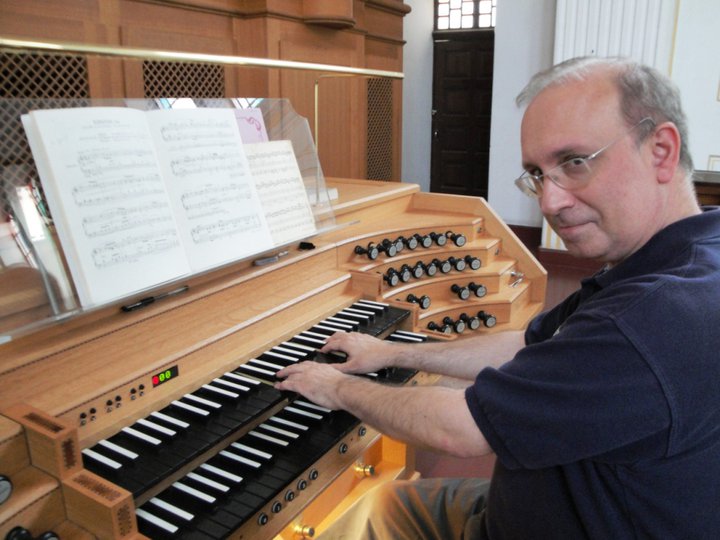

The views and opinions expressed in this article are those of the author, and do not necessarily reflect the position of Vox Humana.